In the early morning hours of August 29, 2011, a bus pulled up to the intersection of Wilshire and Western, loaded a few passengers, and continued on its route.
But this was not one of Metro’s orange Local or red Rapid buses. Nor was it a LADOT DASH shuttle. Instead, this was one of Santa Monica’s Big Blue buses, for the first time operating on surface streets east of the Pico/Rimpau transit center (not counting Santa Monica’s #10 Express to Downtown via the freeway).
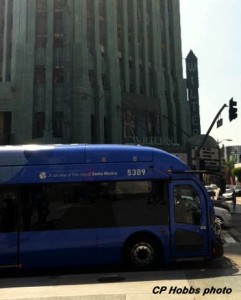 Appreciation of the historic significance of this route extension requires a discussion of the history of the Pico/Rimpau transit center, the Santa Monica Municipal Bus Lines (“Big Blue Bus”) and of transit in West Los Angeles in general.
Appreciation of the historic significance of this route extension requires a discussion of the history of the Pico/Rimpau transit center, the Santa Monica Municipal Bus Lines (“Big Blue Bus”) and of transit in West Los Angeles in general.
Do You Know The Way to Santa Monica?
From the late 1800’s onward, passenger transportation between Santa Monica and Los Angeles was provided by a variety of rail lines which became the Pacific Electric. In 1924, PE started a busroute along Pico Boulevard between Santa Monica and its Vineyard depot, near the intersection of Venice and San Vicente.
Additional rail service west of Downtown Los Angeles was provided by Los Angeles Railway. LARY operated streetcar routes on Pico Bl, Washington Bl, 3rd St, etc. These terminated at or just short of La Brea Avenue.
Dissatisfied with PE’s service and fares, the City of Santa Monica began running its own bus service along Pico Bl. on April 14, 1928. Santa Monica’s bus line used the same route as PE’s, except it terminated at Rimpau St. At Rimpau, passengers could board LARY’s “P” streetcar line to Downtown LA. The combination of Santa Monica’s bus and the LARY streetcar offered a lower fare than PE did between Santa Monica and LA. PE resented the competition, there was nothing they could do about it, since municipal bus services were not constrained by the same Railroad Commission regulations as private companies were. So PE discontinued its Pico Bl line, leaving the market to Santa Monica Municipal Bus Lines.
Birth of the Pico/Rimpau Terminal
The SMMBL buses layed over off-street in a leased lot at Muirfield Road. This facility, which was also used by Bay Cities Transit buses, was inadequate; buses and boarding passengers often blocked the nearby sidewalk. (Bay Cities Transit, another bus company serving Santa Monica and West Los Angeles, was acquired by Santa Monica Municipal Bus in 1951.)
In mid-1934, the owner of the Muirfield lot announced plans to erect a building on the property. No longer would it be available for use as a bus depot. The transit agencies, along with the City of Los Angeles scrambled to find an alternative. By March 1935, construction began on a transfer facility, just south of Pico at Rimpau Bl. This terminal provided off-street loading areas for both streetcars and buses. The new terminal opened for service in April.
Reaching Beyond Rimpau
Although the new terminal made transferring between bus and streetcar much easier, some people in Santa Monica demanded a direct, one-seat bus service into Downtown Los Angeles. Although PE provided such services over their rail network, many in Santa Monica considered PE’s fares too high. They believed that Santa Monica’s municipal bus could provide a better service at a lower fare.
In October 1935, the City of Santa Monica applied for a permit with the City of Los Angeles to operate a proposed bus route via Wilshire, Santa Monica, Burton Way, Alpine to 3rd St through Beverly Hills and Los Angeles into Downtown. Fares for the entire trip would be 20 cents one way, 35 cents round trip. Santa Monica planned to cover the entire route in slightly under an hour.
LARY operated its “R” streetcar on 3rd St, between Downtown Los Angeles and La Brea Avenue. LARY, along with PE, vehemently protested against Santa Monica’s proposed bus route. Since Santa Monica planned to provide local service along the entire length of its proposed new route, PE and LARY worried that they would lose business to the new line, and perhaps even be foreced to cut service.
Another issue was that the Santa Monica line, as part of a government agency, would pay no franchise fees or taxes as the private companies (such as LARY and PE) were required to. The rail operators also questioned whether Santa Monica could run the line in as short a time as 55 minutes. A City of Los Angeles traffic engineer strongly advised against allowing more buses into the Downtown area, as it was already choked with auto and streetcar traffic.
Testimony, both for and against the Santa Monica line, before the Los Angeles Board of Public Utilities and Transportation went on for five days. Finally, in March 1936, the City of Los Angeles rejected Santa Monica’s application, in favor of a competing proposal by the rail operators to offer shuttle bus service between the La Brea streetcar terminal and Beverly Hills. Santa Monica mulled suing Los Angeles, but decided it had other issues to deal with at the time.
Santa Monica tried again in 1955 to provide direct service to Downtown LA. This time the bus line planned to extend its Pico Bl. route (#7) eastward from the Pico/Rimpau terminal via Rimpau and Olympic into Downtown. Unlike the 1935 proposal, this would be an express service, stopping only at major transfer points to discharge passengers on eastbound trips, and to board passengers going westbound.
Again the streetcar company (now Los Angeles Transit Lines) and PE’s replacement Metropolitan Coach Lines, which operated bus service along Olympic Bl, protested, claiming that the proposed Santa Monica bus route would cause them to lose money. The Los Angeles City Council, concerned about losing franchise fees paid by the two private operators if Santa Monica started operations east of Rimpau, also voiced its opposition.
On May 29, 1956, the LA BPUT voted aganist allowing Santa Monica Bus to serve Downtown LA. Santa Monica officials considered operating the service without LA City permission, claiming their right to do so under the California State Constitution, but did not push the matter further. The eastern limit of the Santa Monica bus system remained at Pico/Rimpau.
In 1971, the passage of the Transportation Devlopment Act (TDA) codified the areas in which each municipal bus company, including Santa Monica’s, covered; service could not be extended outside of its so-called “reserved service area” without permission from any other affected transit agency. During the mid-1970s, LA’s dominant transit agency, now RTD, reconfigured its services throughout the region into a grid pattern. But Santa Monica still held the rights to Pico west of Rimpau, and RTD’s Pico route (#30/31) ended at the Pico/Rimpau terminal just as its forerunner, the LARY’s “P” streetcar, did. RTD and Santa Monica did trade a few operating rights, most notably RTD’s acquiring local rights along Wilshire west of Westwood in exchange for Santa Monica getting exclusive coverage of Lincoln Boulevard between Santa Monica and LAX.
Blue Diamond Express
A major service change came in March 1976 with the opening of the “Diamond Lane,” a carpool lane on the Santa Monica Freeway. Santa Monica implemented a new Line #10, otherwise known as the “Blue Diamond Express,” along the freeway between Santa Monica and Los Angeles. While the Diamond Lanes proved politically unpopular and were removed within a few months, the express bus service remained and continues to be one of Santa Monica’s most popular bus routes.
Under New Management
Big changes were in store for the Big Blue Bus with the retirement of Jack Hutchinson and the appointment of John Catoe as General Manager in 1992. Since the early 1960s, Hutchinson had run the Santa Monica bus system efficiently but conservatively, and rarely considered route modifications or other changes to the system. With Catoe at the helm, Santa Monica’s bus service planners began to look at ways to modify the system to bring in new ridership.
A few years later, several transit advocates (including the author) presented some service change suggestions at a Big Blue Bus public hearing. Included was a proposal to extend several SMMBL routes, including the Pico route (#7), from Pico/Rimpau to the Wilshire/Western Metro Red (now Purple) Line station. In effect, Wilshire/Western would become the “new” Pico/Rimpau terminal. Although the advocates’ comments were welcomed, it was not until the mid-2000s when Santa Monica seriously began considering extending the route to Wilshire/Western. LACMTA resisted the expansion, which would have duplicated several of its own routes on Crenshaw and Wilshire Blvds.
Midtown Crossing
In 2006, the extensive redevelopment of a shopping center near the Pico/Rimpau terminal required that the bus transfer facilty be moved to the south side of the center, near San Vicente Bl. The relocation did not change the basic function of the Pico/Rimpau terminal: it was still the place where Santa Monica and LACMTA (“Metro”) exchanged passengers.
In August 2008, Big Blue Bus started their “Rapid 7” service, using limited stops and signal preemption to provide a faster trip between Santa Monica and the Pico/Rimpau terminal. The Pico/Rimpau transfer point was becoming more and more crowded, as it was served by both local and Rapid #7 buses, other Big Blue Bus routes and Metro buses.
Breakthrough!
Finally in late 2010 or early 2011, Metro relented, and allowed the Big Blue Bus to extend its Rapid 7 to the Wilshire/Western Metro station. As part of the deal, Santa Monica agreed not to handle local passengers west east of Pico/Rimpau. But this restriction could not take away from the fact that the “Rimpau Curtain” had finally been broken after all these decades.
As more and more transit users become aware of the new connection, ridership on the extended Rapid 7 will only increase. Once Big Blue Bus starts accepting the TAP card (a universal transit pass) the ridership will increase even more.
Sources:
California Railroad Commission Decision #13841 (July 1924 – establishes PE bus service on Pico Bl.)
Ayer, Bob. History of Santa Monica’s Big Blue Bus.
Minutes of the Board of Public Utilities and Transportation (Los Angeles) 1935, 1936
“Proposed Bus Route On File.” Santa Monica Evening Outlook, October 3, 1935.
“Board Rejects City Bus Line Extension Plea.” Santa Monica Evening Outlook, March 4,1936
“SM Buses Get OK For LA Run.” Santa Monica Evening Outlook, Feb 28, 1956
“SM Bus Line to LA Meets New Protests.” Santa Monica Evening Outlook, Mar 19, 1956
“SM to Seek OK on Bus Line May 29.” Santa Monica Evening Outlook, May 16, 1956
“SM Bus Extension Rejected.” Santa Monica Evening Outlook, May 29, 1956
TDA (Transportation Development Act). Sacramento: California Department of Transportation, p. 67
http://www.dot.ca.gov/hq/MassTrans/Docs-Pdfs/STIP/TDA7-15-2011.pdf
SMMBL Short Range Transit Plans: 2005-2007, 2006-2008, 2007-2009
“New Pico/Rimpau Transit Center Opens.” Metro News, February 2006, p. 2
(http://www.metro.net/news_info/publications/images/metronews_2006_02_eng.pdf)
http://transittalk.proboards.com/index.cgi?board=muni&action=display&thread=465
(discussion on LACMTA’s reluctance to allow SMMBL access to Wilshire/Western)
“Big Blue Bus starts ‘Rapid 7’ service on Pico Blvd. Corridor” Argonaut, August 28, 2008.
http://www.argonautnewspaper.com/articles/2008/08/28/news_-_features/santa_monica/s5.txt
“SMC Students to Get Free Ride.” Santa Monica Lookout, April 18, 2008
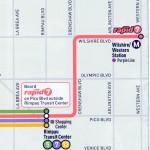
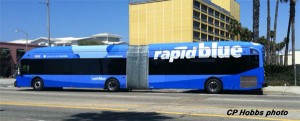
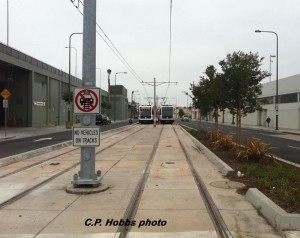
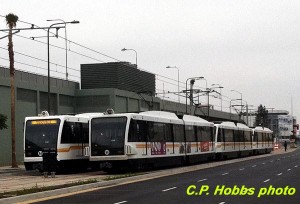
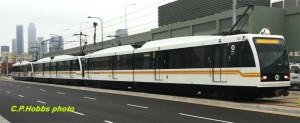
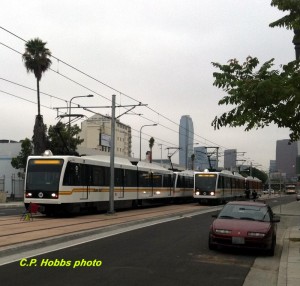
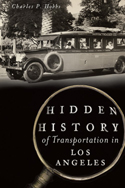
Recent Comments